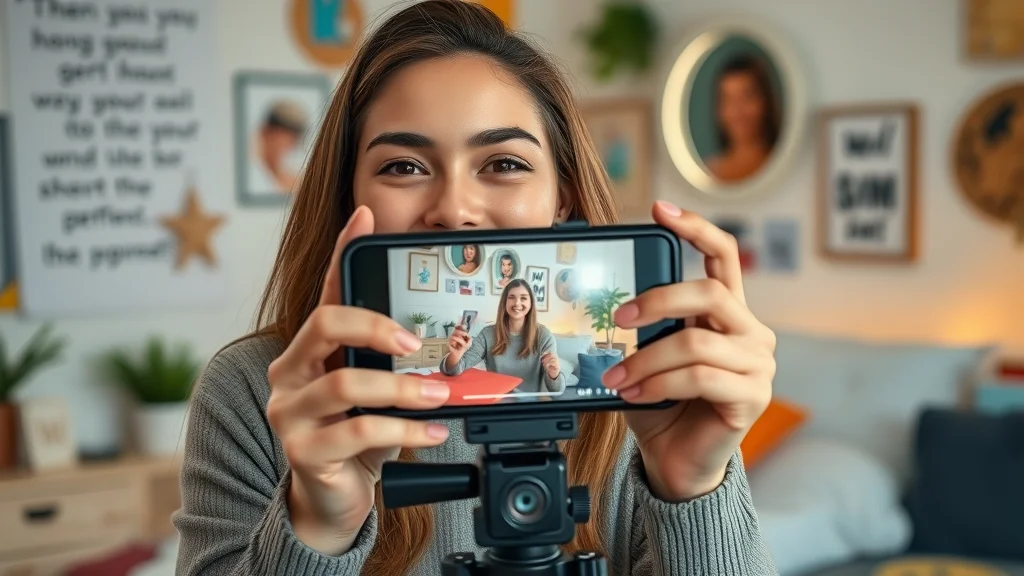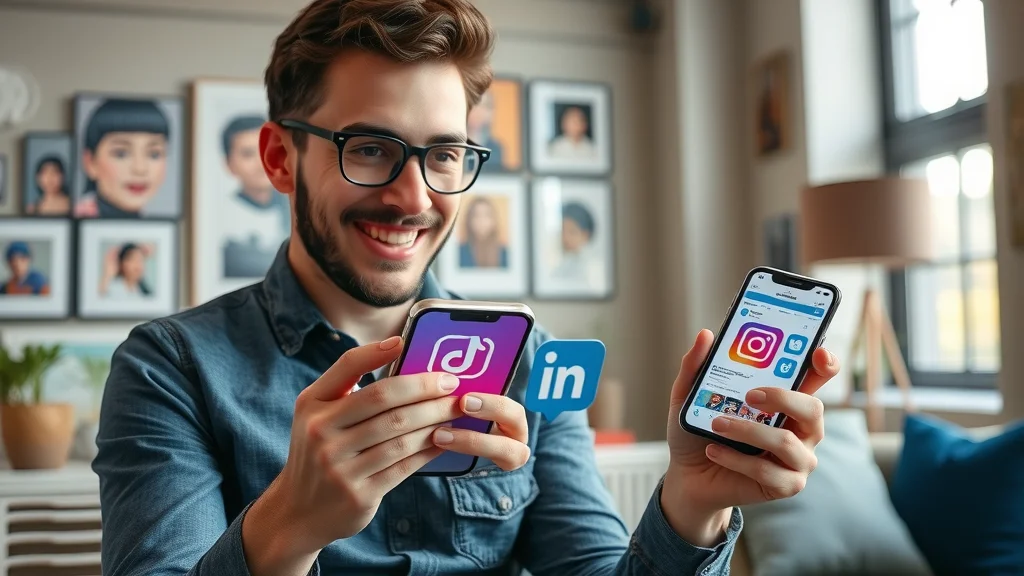Did you know that over 60% of content creators feel stuck—unsure of how to consistently deliver great content, even though the demand for engaging digital content has never been higher? The real fix starts here: not with luck or endless brainstorming, but with a solid content strategy and proven content creation techniques. If you’ve ever worried you’re not creative enough or felt lost in the content creation process, you’re about to discover why that struggle is so common—and, more importantly, how to break free from it today by mastering proven content creation strategies.

Key Takeaways: Unlocking Success in Content Creation
The essential truths every content creator needs to understand to succeed
How a strategic approach to content creation increases engagement and ROI
-

Action steps you can take today to become a top content creator
What You'll Learn: Your Roadmap to Mastering Content Creation
The full content creation process, step-by-step
Creative ways to generate content ideas for any platform
-

Top content types for different goals and audiences
How to monetize content as a professional content creator
A Surprising Truth About Content Creation: The Statistics You Didn't Expect
Most aspiring content creators believe producing great content is about having endless inspiration or flashy design skills, but true success depends on a clear content strategy and a deep understanding of the entire content creation process. But here’s the twist: 91% of blogs and social media posts get no meaningful engagement. That means most digital content—no matter how clever or visually stunning—never finds its audience. Why? The content creation process is often rushed, missing key steps like research, clarity, or a clear content strategy that aligns with audience needs. Industry reports show that brands with a solid content creation plan enjoy three times more leads per dollar spent than those who just “post and hope.” Every successful content creator, whether starting solo or as part of a big brand, follows a framework blending creativity with a repeatable system. If you’ve ever wondered why your content ideas fall flat or why great content seems so rare, you’re not alone—most people are never taught how effective content is actually made, distributed, and measured.
Let’s flip the script on struggling with content creation. Imagine you’re a marketer launching your first piece of digital content. You spend hours on a blog post, pour your ideas into it, but it gets buried in the noise. The creators who win know it’s not about publishing more; it’s about understanding what kind of content really resonates, how the right type of content matches search intent, and how each stage of your process drives audience action. In the sections ahead, we’ll break down real-world success stories, reveal common stumbles, and show you specific social media strategies that work. With every concept, you’ll get examples and action steps so you can finally feel confident about your digital content creation.
Why Most Content Creators Struggle With Great Content
Most content creators hit walls because they jump straight into creating without understanding the core needs of their target audience or lack a clear content strategy. Often, they’ll try to copy trending content types or viral posts on social media platforms, thinking that quick wins come from mimicry rather than genuine relevance. The result? Generic, forgettable content that fails to drive engagement, brand awareness, or conversions. What separates effective content from the rest is not just originality, but clarity on the purpose, the content type, and the audience journey. For example, a podcast needs a different approach and distribution than a how-to blog post or TikTok video, yet many content creators treat all digital content the same.
Another major challenge is the belief that “creating content” is a single step. In reality, great content grows out of several stages—ideation, planning, drafting, optimizing, and sharing. Skipping any part of this content creation process usually means the final piece lacks focus or impact. Finally, many underestimate the power of feedback and analytics: without reviewing what’s effective and why, creators repeat the same mistakes. In short, to succeed at content creation, you need to know not just what to create, but why it will matter—and to whom.
What is Content Creation? Essentials Every Content Creator Must Know
Content creation is the strategic process of generating content ideas, developing digital content assets, and distributing them across social media and other channels to effectively connect with an audience online. It extends beyond writing a single blog post or uploading a video; it’s about aligning every type of content with your larger message, business goals, or personal brand. Whether you’re crafting infographics, podcasts, articles or dynamic interactive quizzes, great content is purposeful—it changes how people think, learn, or act. Content creation thrives where there’s a combination of creativity, analytics, and a willingness to keep experimenting and refining.
In practice, this means understanding different types of content, their strengths, and how they fit specific social media platforms or business strategies. Are you looking to boost engagement on social media? Grow your followers on Instagram or LinkedIn? Launch a newsletter? Each target audience requires a different content approach and type of content to maximize impact. Aspiring content creators must know that digital content can be a blog, a story, a short-form reel, or even a searchable resource like a white paper. The “creation is the process” mindset—a focus on every step, from brainstorming content ideas to gauging audience reactions—is what sets successful content apart.
Exploring the Different Types of Content in Digital Spaces
The universe of content creation is vast, encompassing various content types designed to meet diverse audience needs. You’ll find everything from text-based blogs and industry white papers, to rich video tutorials, catchy infographics, lively podcasts, and even interactive tools like quizzes and calculators. Each type of content (and content type!) is optimized for different goals and audiences. For example, visual content works wonders on image-driven platforms like Instagram, while long-form articles or guides are the backbone of effective inbound marketing strategies and search engine optimization.
Consider how YouTubers leverage video content to build massive audiences, while LinkedIn creators focus on thought-leadership articles, and Instagram marketers drive engagement with carousel posts and Reels. Choosing the right type of content isn’t just a creative decision—it is a strategic one that influences your content creation success. The best content creators pick their medium based on what their target audience values most, and where they are most likely to interact. Never underestimate the importance of diversifying your content ideas: blending visual, written, and interactive formats increases your reach and impact across all major media platforms.

Content Creation vs. Content Curation: What Sets Them Apart?
Content creation and content curation are often confused, but they serve different roles in a comprehensive digital content strategy. Content creation is building something original from scratch—a new blog, video, podcast, or digital tool. Content curation, on the other hand, is about handpicking and sharing the best resources, articles, or ideas from around the web, packaged with your unique insights or commentary. While both are valuable, creation lets you shape your brand’s voice and message, whereas curation builds authority by connecting your audience to a wider network of valuable content ideas.
"Great content isn’t just written—it’s experienced. The right content idea can change an audience’s mindset in moments."
Blending the two is often the most effective content strategy: generate content that puts your expertise out there, and curate the best digital resources to reinforce your message and serve your audience.
The Full Content Creation Process: From Concept to Published Great Content
A winning piece of content isn’t accidental: it follows a predictable yet creative content creation process, broken down into clear, actionable stages. Whether you’re a new content creator or looking to refresh your approach, understanding each phase gives you a reliable roadmap for moving from idea to impact. Here’s a quick comparison:
Stages of Content Creation Process |
Key Tasks |
Best Practices |
|---|---|---|
Discover Ideas |
Brainstorm, trend analysis, audience feedback |
Focus on relevant problems; use keyword tools, social listening |
Research & Planning |
Gather insights, outline content, set goals |
Map to search intent; research competitors; define KPIs |
Drafting |
Create the initial version; tailor for platform |
Follow a structure; use storytelling and examples |
Editing |
Review for clarity, quality, SEO |
Resolve errors; add visuals, links, CTAs |
Publishing |
Upload, schedule, share on social media |
Optimize timing; adjust for platform best practices |
Distribution |
Promote across platforms; repurpose content |
Cross-post; use hashtags, influencer outreach |
Analysis |
Track results; get feedback; iterate |
Monitor analytics; survey followers; tweak strategy |
As you refine your content creation process, it's also valuable to explore how other digital marketing tactics can complement your efforts. For instance, integrating best practices for effective email marketing can help you distribute your content more strategically and nurture deeper audience relationships. If you're interested in actionable tips for optimizing your email campaigns, check out these proven email marketing strategies that align with content-driven growth.
Stage 1: Discovering Your Content Ideas—Brainstorming That Works
Finding the right content idea starts with understanding your audience’s real challenges and motivations. Effective creators look beyond obvious trends, searching for pain points, frequent questions, or topics that light up discussion in forums and comments. One popular tactic is “brainwriting,” where you jot down every content idea without judgment for five minutes—then score each for audience relevance to generate content that truly resonates. Another winning strategy: use keyword research to discover search engine queries in your niche. This not only informs your next piece of digital content, but helps ensure you’re generating content your audience is actively seeking.
Don’t forget to involve teammates, collaborators, or fans; round-table brainstorming or social polls uncover new angles you’d never think of solo. Great content ideas often come from combining personal experience with fresh insights from your target audience or analytics. Remember—stuck creators rarely lack good ideas; they just need better processes for capturing, sorting, and refining them.
Stage 2: Research, Planning, and Setting Up Your Content Strategy
Once you have your content idea, research is king. Dive deep into existing material, note what competitors are doing, and see which kind of content top creators in your field are using for engagement. Look for gaps or angles no one has covered—these become your opportunity for differentiation. Outline your main message, supporting points, and how your content ties into your broader content strategy. Map your narrative to your brand values and user journey—are you educating, inspiring, or selling? Decide where the piece of content fits on the buyer’s journey: is it for awareness, consideration, or conversion?

Set clear, realistic goals for every content type you publish to ensure your content creation efforts align with your overall content strategy. Whether it’s boosting social media shares, building an email list, or improving search engine rankings, your plan should align with both long-term growth and immediate engagement. Smart content creators also set KPIs and review them after content goes live, using analytics to steer future ideas and improve overall creation process efficiency.
Stage 3: Drafting Different Types of Content for Every Platform
Drafting is where your content idea becomes tangible, transforming your concepts into engaging digital content tailored for each platform. Here, structure matters. For example, start blog posts with a bold hook, use subheads to break up text, and include bulleted lists for scan-ability. For video content, scripting an engaging introduction and pacing your narrative keeps viewers watching. Each platform rewards different content types and structures, so always adapt your content type and format to fit your target audience’s platform of choice—what works on TikTok is rarely right for LinkedIn.
Bring your draft to life with rich visuals, real-world examples, and clear CTAs. Successful content creators craft messages that blend value, personality, and actionable information. Don’t be afraid to tell stories—nothing builds trust or connection like authentic narrative, especially on saturated social media platforms.
Stage 4: Editing Digital Content for Clarity and Engagement
Editing is where good content becomes great content by refining your digital content for clarity, SEO optimization, and audience engagement. Review your work for clarity and flow—does your introduction grab attention? Are you using language your target audience understands? Ensure every paragraph supports your main message, and cut redundant or jargon-heavy sections. Beyond grammar and spelling, check for SEO optimization: use keywords naturally, optimize headings, and add meta descriptions for better search engine visibility.
Enhance engagement by adding visuals, optimizing paragraph length for mobile devices, and double-checking that your calls to action are clear and persuasive. Involve another content creator or an editor for honest feedback—fresh eyes spot confusing sections and opportunities you might miss. Consistently producing quality content is as much about strong editing as it is about raw creativity.
Stage 5: Publishing and Distributing Your Content Across Social Media and Other Channels
Publishing and distribution are about getting your digital content in front of the right people at the right time through strategic social media sharing and platform-specific optimization. Schedule your blog, video, or graphic for publication, optimizing the timing for each social media channel’s peak hours. Don’t just hit “publish” and walk away—actively share your content across every relevant platform, adapting snippets or visuals for Twitter, Instagram, TikTok, or LinkedIn as needed.
Successful content creators treat distribution as an ongoing process, repurposing content for new formats (e.g., turning a blog into a podcast episode or Instagram carousel) and leveraging communities, email lists, or partnerships to maximize reach. Analyze which channels deliver engagement and conversion, and refine your distribution strategies with every new piece of digital content you launch.
How Do I Start Creating Content? Proven Methods for New Content Creators
If you’re new to content creation, the best path is to start creating right away—no perfection required! Begin by understanding your target audience: what problems do they face? What questions do they ask online? Then, pick one content type you’re excited about (blog, video, infographic), and map out your first content idea using the frameworks shared above. Focus on launching your first piece, then use feedback to make the next one better. Consistent action—not endless planning—builds skill, confidence, and eventually, an engaged audience.
Many successful content creators began with simple “how-to” videos on their phone or short Q&A blog posts on niche forums. Don’t be afraid to experiment. Track what kind of content gets even a little traction, then double down on those types of content. With each iteration, you’ll learn which formats, subjects, and social media platforms bring the most value to your brand and your audience.
Picking the Right Content Type for Your Audience
Matching your message to the right content type is step one for every successful digital marketing strategy. If your audience loves quick inspiration or behind-the-scenes access, short-form video content (like Instagram Stories or TikTok reels) will drive higher engagement. If they seek in-depth insights, long-form blogs or white papers offer the value and SEO potential your brand needs. For B2B brands or personal thought leadership, LinkedIn articles and professional presentations shine.
Think through what content types your favorite brands or creators use—and more importantly, why. Are they sharing expertise, starting conversations, or channeling viral trends? The answer tells you what your own audience values most. Testing different kinds of content and learning from analytics will help you perfect your strategy over time.
Generating Your First Content Idea—Tactics from Successful Content Creators
Great ideas don’t appear from thin air. Even veteran creators often use idea generation hacks: browsing industry forums, using content idea generators, surveying their email list, or checking Google Trends for real-time topics. Some start with “problem mapping”—listing every obstacle or curiosity their audience might have, then creating solutions through content. For social media, think in themes (e.g., motivational Mondays or FAQ Fridays) to keep a steady stream of shareable digital assets.

Don’t wait for the perfect topic: start creating now, learn from each post or video, and soon you’ll find your signature content idea style—one that resonates and performs across your preferred social media platforms.
Content Creation Tools and Platforms to Simplify Your Workflow
Canva (visuals, infographics)
Grammarly (editing and clarity)
Google Analytics (measuring digital content performance)
Hootsuite (scheduling for multiple social media channels)
BuzzSumo (finding trending topics and successful content ideas)
There are free and premium tools for every part of the content creation process. Experiment with templates, keep a swipe file of generic content ideas, and don’t be afraid to upgrade once you see momentum. The right tools can automate tedious tasks, so you can focus on developing great content that serves your target audience.
Real-World Example: First Steps of a New Content Creator
Meet Chloe, an aspiring pet care expert. She started by listing common dog training frustrations in online forums, then outlined a weekly blog topic plan. Her first content piece, “Why Most Puppies Chew Everything (and How to Stop It),” was drafted in Google Docs and posted to her WordPress blog. She shared snippets to Instagram and a pet-lover Facebook group. At first, her analytics were modest—until a comment sparked a video follow-up that outperformed her blog. By repeating this process—brainstorming, learning, and iterating—Chloe grew a loyal niche audience and diversified into video tutorials and guest podcast appearances.
"Start creating, even if you’re not ready. Consistency builds confidence—and eventually, great content."
Top Content Types: Unlocking the Best for Your Brand
Which type of content fits your goals? The answer is rarely one-size-fits-all. Here’s how various content types drive different results across digital platforms:
Content Type |
Best-Use Scenario |
Impact on Engagement |
|---|---|---|
Visual (infographics, videos) |
Awareness, explainer content, sharing on social media |
High share rates and strong brand recall |
Written (blogs, white papers) |
SEO, education, industry expertise |
Drives organic search traffic and authority |
Interactive (quizzes, calculators) |
Lead generation, audience engagement |
Boosts time on site and repeat visits |
Audio (podcasts) |
Long-form storytelling, niche communities |
Builds loyal followings and thought leadership |
Social-first (short videos, Stories) |
Trend participation, viral reach |
Accelerates audience growth on platforms |
Visual Content Creation: Graphics, Videos, and Slides
Visuals captivate quickly and travel fast across social media channels. Infographics summarize data, explainer videos demystify complex topics, and well-designed slides support thought leadership. Even basic static images can dramatically boost your content’s share ability. Platforms like Instagram, Pinterest, and TikTok reward visually compelling content, while LinkedIn carousels showcase thought leadership in a skimmable way.

The best visual content matches your brand’s look, feels genuine to your audience, and is easy to consume. Use design templates when starting out and upgrade to custom visuals as your skills and resources grow.
Written Content Creation: Blogs, Articles, and Guides
Blogs and guides provide deep value for both your readers and search engines. Detailed articles help answer audience questions, build domain expertise, and drive organic traffic over time. Search engine optimization (SEO) is essential here—use keywords naturally, structure content with subheads, and offer actionable insights in each post. Compelling written content not only educates your target audience but also captures leads for long-term growth.
Don’t underestimate the power of storytelling: customer case studies, founder journeys, and listicles (“Top Reasons Your Content Isn’t Working”) all create connection. Over time, your writing will reveal which ideas truly resonate and which need to be enhanced or reworked for future campaigns.
Interactive Digital Content: Quizzes, Polls, and Calculators
Interactive content grabs attention and drives active participation. Quizzes and polls, for example, invite users to engage, share opinions, or discover something new about themselves—often increasing both social shares and time spent on your page. Calculators and self-assessments (e.g., “What’s Your Content Marketing Score?”) generate valuable leads by offering useful, personalized feedback.

For growth-focused content creators, pairing interactive tools with downloadable assets (eBooks, guides) nurtures deeper relationships and positions your brand as a go-to problem solver.
Social Media Content: What Works on Each Platform
Different social media platforms reward different types of content. On TikTok, quick “how-to” clips and trend challenges often go viral. Instagram favors visual storytelling—carousels, Reels, and Stories that pack a punch in seconds. LinkedIn users prefer professional tips, original articles, and slide presentations that deliver industry insights or case studies.
Short-form videos drive audience growth and foster instant reactions.
Carousels and infographics support conversions by delivering value up front.
Story-led posts improve brand awareness and inspire ongoing conversation.
Choose your platforms based on where your audience spends time, and experiment with various content types until you find the sweet spot that converts.
Generating Endless Content Ideas: Strategies That Never Fail
Running out of content ideas is a myth—when you set up the right systems, inspiration flows. Begin by grounding your content strategy in audience research. Use keyword research tools like Google Keyword Planner or AnswerThePublic to find frequently asked questions. Social listening platforms reveal trending discussions, and current events offer “in the moment” topics ready for analysis or commentary. Brainstorm content by drawing mind maps or conducting regular “content sprints” with collaborators and fans.

How to use keyword research for fast content ideas: enter main topics and expand on related long-tail phrases for niche posts.
Leverage current events and trends for real-time content creation: react to news, industry changes, or viral moments.
The most effective planners keep a “content bank” of unused ideas and regularly revisit analytics to see which past topics sparked the most engagement—then build on them for future success.
Common Pitfalls: Why Some Content Ideas Don’t Work
There’s no shame in launching a piece of digital content that flops—it’s part of the journey. But most failed ideas share common roots: misreading the target audience, copying trends without personalizing, or skipping steps in the content creation process. Sometimes, content is “nice to have” but not urgent or actionable for the user, making it easy to ignore.
Always vet your ideas against these questions: Is this solving a real problem? Does it match my audience’s goals today? Did I check if this has already saturated the market? Use honest feedback, audience surveys, and content performance analytics to keep iterating. The more you learn from what doesn’t work, the quicker you’ll generate content that stands out.
The 7 Steps of Content Creation: A Practical Framework
Define your goal and target audience
Research content ideas and competitors
Choose the right content type and platform
Draft your content with a clear structure
Edit and optimize for SEO
Publish to relevant channels
Analyze performance and iterate
Real-World Examples: Applying the 7 Steps to Content Creation
Let’s see the process in action. Sarah, a new fitness coach, defined her goal: help busy parents fit in daily exercise. She researched what content was missing from current blogs and found “10-minute home routines” had little competition. Picking YouTube for video content and Instagram for visual posts, she filmed quick demonstrations and wrote scripts that addressed common pain points.
After editing with feedback from friends, Sarah published her first set. She shared the content across platforms and monitored which episodes got the most comments and shares. Reviewing analytics let her refine her approach—she learned her audience loved workouts that involved kids, leading to a video series that became her signature. Consistent use of all seven steps turned Sarah from an unknown content creator to a trusted voice in online fitness.
How Do Content Creators Make Money? Revenue Models Explained
Monetization comes in many forms for today’s content creators. The most direct is ad revenue—placing display ads on blogs or partnering with YouTube for video monetization. Sponsorships come next, with brands paying for mentions or dedicated content. Affiliate marketing—earning commission for products recommended in your content—is especially prevalent among product review blogs and tech YouTubers.
Understanding Different Monetization Strategies for Content Creators
Ads, sponsorships, affiliate marketing, digital products, and more
Other lucrative revenue streams include launching digital products (eBooks, online courses), membership programs (Patreon, exclusive Slack groups), and even live events or webinars. Each strategy suits different content types and audience sizes. The most successful content creators often mix several models, diversifying income streams and maximizing impact with loyal fans.
Success Stories: Content Creators Who Built Thriving Careers
Take “Chef Mike,” for example—a home cook who started creating simple recipe videos on TikTok. By pairing high-quality food content with a friendly, relatable persona, Mike grew a devoted fanbase. Soon, brands approached him for sponsored partnerships, and his own eBook launched on the heels of a viral pumpkin soup video. Mike now earns from ad revenue, brand deals, merchandise, and private cooking workshops. His story proves there’s no generic path: creativity, strategic content creation, and willingness to adapt open multiple doors.

"There’s no single path for a successful content creator—find your niche and serve your audience well."
Unlocking the Power of Social Media in Content Creation
Social media is where most digital content finds its audience today—but every platform is unique. Understanding what works on each channel, setting a content calendar, and staying consistent are the foundation of sustainable growth.
Platform Differences: What Makes Great Content on TikTok, Instagram, and LinkedIn
TikTok’s algorithm favors energetic, visually striking videos with upfront hooks and short “how-tos.” Instagram rewards creativity in stories, Reels, and carousels—especially when you blend strong visuals with authentic captions. LinkedIn elevates industry thought leadership, spotlighting problem-solving articles, case studies, and professional how-to content. One content idea might go viral on TikTok but barely register on LinkedIn unless reworked for the audience and platform tone.

When choosing which platform to focus on, always measure your audience’s demographics, habits, and feedback. Start small, master one platform’s style, then repurpose or customize your most engaging content types to expand your reach to new social media platforms.
Scheduling, Consistency, and Audience Engagement on Social Platforms
Posting regularly, at the right times, matters more than posting often. Use scheduling tools to plan your social media calendar in advance, but make room for spontaneous, real-time content that taps into trending topics. Respond to comments, encourage user-generated content, and review analytics each week to spot what drives the most click-throughs, shares, or saves.
Consistency builds trust—audiences crave reliable voices in noisy social feeds. As you grow, poll your fans on preferred content types or formats so you’re always generating content that meets their needs, not just following trends. Remember, the secret to social media mastery is analyzing what works, refining content strategies, and staying committed over time.
People Also Ask: Essential Content Creation Questions Answered
What is content creation?
Content creation is the strategic process of ideating, producing, and sharing digital assets (text, video, graphics) to connect with an audience, typically online. Successful content creation requires both creativity and a robust content strategy to achieve business or personal goals.
How do I start creating content?
To start creating content, select your target audience, brainstorm content ideas that align with their needs, choose a content type (e.g., blog, video), and use available content creation tools to design and publish your first piece. Focus on continuous improvement.
What are the 7 steps of content creation?
The 7 steps are: define your goal, research topics, select content type/platform, draft, edit/optimize, publish, and analyze results. Each step ensures the content creation process aligns with your audience and objectives.
How do content creators make money?
Content creators earn through ad revenue, sponsorships, affiliate marketing, product sales, and exclusive memberships or subscriptions, depending on platform and audience size.
FAQs: Common Obstacles in Content Creation (and How to Overcome Them)
How do I avoid burnout as a content creator?
Set realistic schedules, batch-create your content, and take breaks for inspiration. Focus on quality content over sheer volume. Engage with your community and celebrate small wins to keep your passion alive.What if my content ideas are not performing well?
Review analytics to spot what’s working and what’s not. Test new content types or formats, seek feedback from your audience, and don’t be afraid to pivot your strategy. Even top creators adjust based on performance.How often should I publish digital content?
Frequency depends on your goals and resources, but consistency is key. Start with a manageable schedule (e.g., once a week), then increase as your workflow streamlines. Quality content builds loyal audiences—even if it’s less frequent.
Your Next Step: Start Creating Great Content With Confidence
"The first step in content creation is simply to begin—every piece gets you closer to mastery."
Action fuels growth. Take what you’ve learned and put it into practice—don’t let uncertainty keep you from sharing your story, expertise, or brand with the world. Every creator starts somewhere—and your next piece of content could be the breakthrough that connects, converts, and inspires.
If you’re ready to take your content creation journey even further, consider expanding your marketing toolkit with strategies that drive business growth from every angle. Exploring a broader range of marketing tips and proven strategies can help you not only create compelling content but also amplify your reach, nurture leads, and build a sustainable brand presence. For a deeper dive into holistic marketing approaches that complement your content efforts, discover these essential marketing strategies to grow your business and unlock new opportunities for success.
I hope you enjoyed reading our blog. If you would like assistance with your marketing, give us a call at 207-710-1449 or visit our website at www.digitalmarketingall.org.
To enhance your understanding of content creation, consider exploring the following resources: “What Is Content Creation? (Plus How-To and List of Tools)”: This article provides a comprehensive overview of content creation, including strategies and tools to develop engaging content. (indeed.com) “Content creation”: This Wikipedia entry delves into the various aspects of content creation, from its definition to its role in digital media. (en.wikipedia.org) These resources offer valuable insights and practical tips to help you navigate the content creation process effectively.
 Add Row
Add Row  Add
Add 








Write A Comment